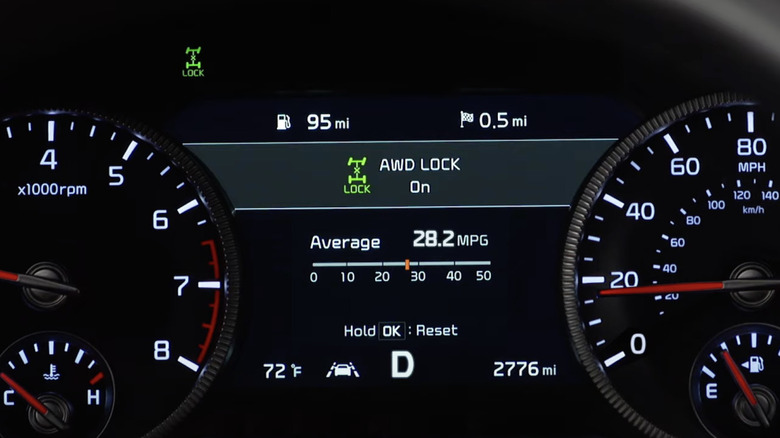What Does AWD Lock Mean? (And When To Use It)
The process of driving (especially in a manual transmission) can be a lot to take in at first, but eventually most of us get used to it and all the particulars become a sort of muscle memory. Actually learning about and remembering the purpose of all the buttons, knobs, and warning lights all over the steering wheel and dashboard is much more of a challenge.
In this case, we're focusing on "AWD Lock," which could pop up in a variety of places depending on the car you drive and if AWD is even available. These places include on the steering wheel, a lever attached to the steering wheel, or somewhere on the dash. But if you do see it somewhere in your cone of vision while sitting in the driver's seat, it's definitely something worth knowing about.
"AWD" itself is an abbreviation for all-wheel drive, which has become a fairly common feature in many modern vehicles. "AWD Lock" is sort of an additional mode for AWD that's meant to be used in specific — and often more extreme — conditions than AWD alone would be able to handle.
The purpose of AWD and AWD Lock
All-wheel drive does about what you're probably expecting it to do — provide and distribute torque to all of a car's wheels. Specifically for the purposes of improved traction, especially when it comes to suboptimal road conditions like bad weather or rough terrain.
If that sounds similar to four-wheel drive (4WD), that's because in a way, it kind of is. However, be aware that there are still many differences between 4WD and AWD. As Cars.com notes, 4WD originally referred to a system that supplied an equal amount of power to all four wheels at the same time, while AWD systems would automatically shift power between all four wheels as needed. Though, these days the features and terminology have sort of mushed together.
AWD Lock is a sort of bridge between the two somewhat similar functions. While standard AWD shifts torque between all four wheels, AWD Lock locks-in and evenly distributes power between the front and rear axles. It's generally not quite as powerful and effective as proper 4WD, which evenly splits power between each wheel, but it does still help in certain situations.
When should you use AWD Lock?
AWD Lock is not intended for use on dry, even pavement or at speeds above 25 mph. Using it outside of the right conditions could also result in irregular noises and vibrations, affect the car's ability to turn, or even cause damage to parts of the AWD system itself. However, cars that offer AWD and AWD Lock sometimes have safety systems in place to automatically shut off AWD Lock once you exceed a certain speed or tap the brakes.
The best time to turn on AWD Lock is when road conditions are bad, and you're going to need a bit of extra traction to stay in control. It'll come in handy when driving over a dirt road, a bit of sand, mud, gravel, and so on — some models even offer specific AWD modes for these types of terrain. However, AWD Lock isn't going to let you effortlessly take a sedan on a 4x4 off-road adventure or anything that extreme.


